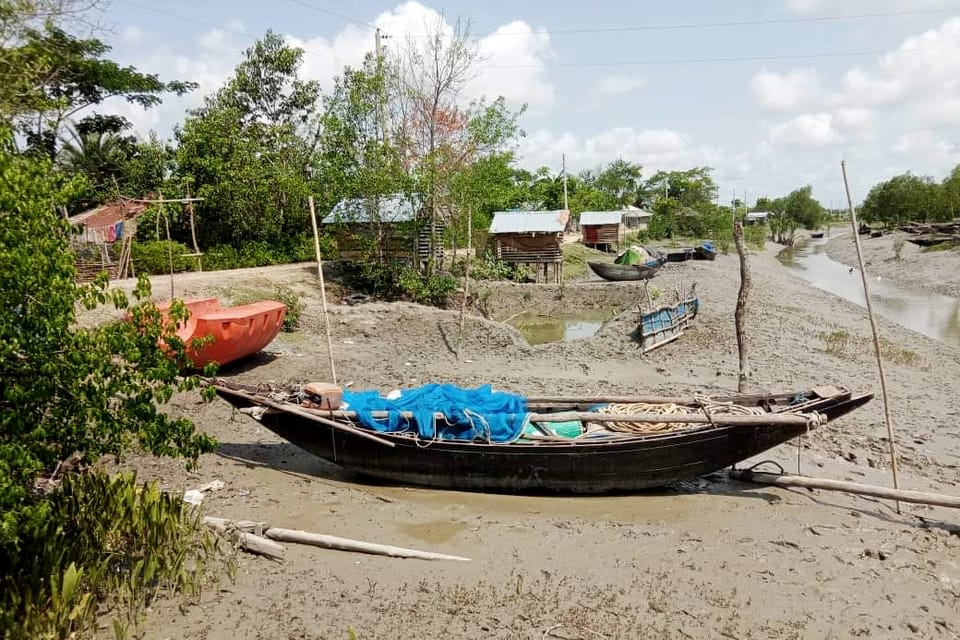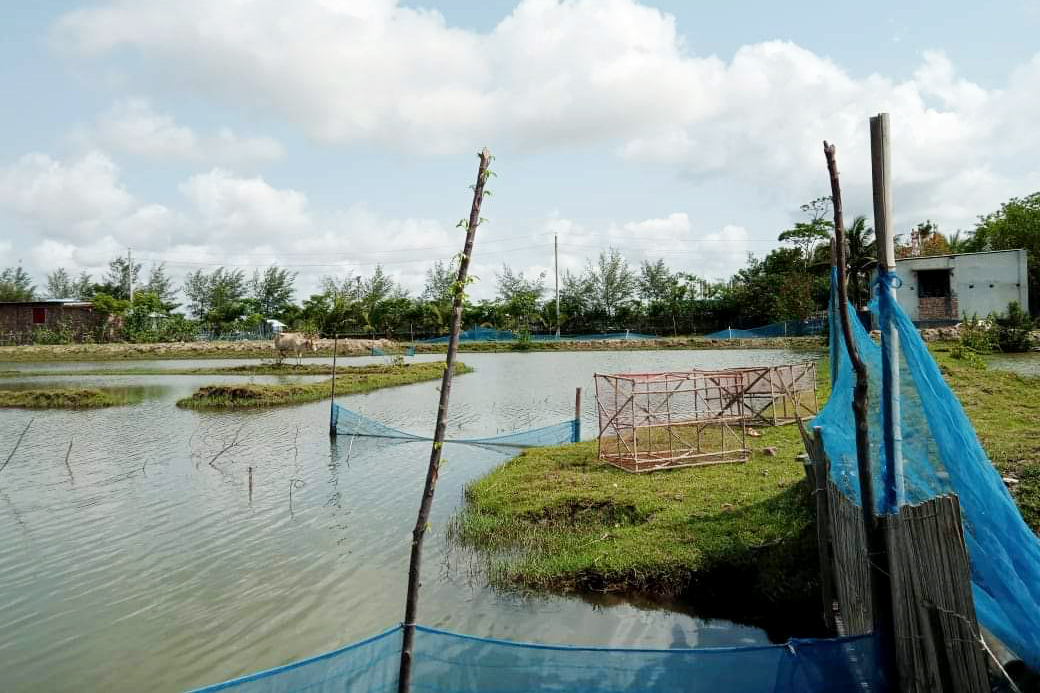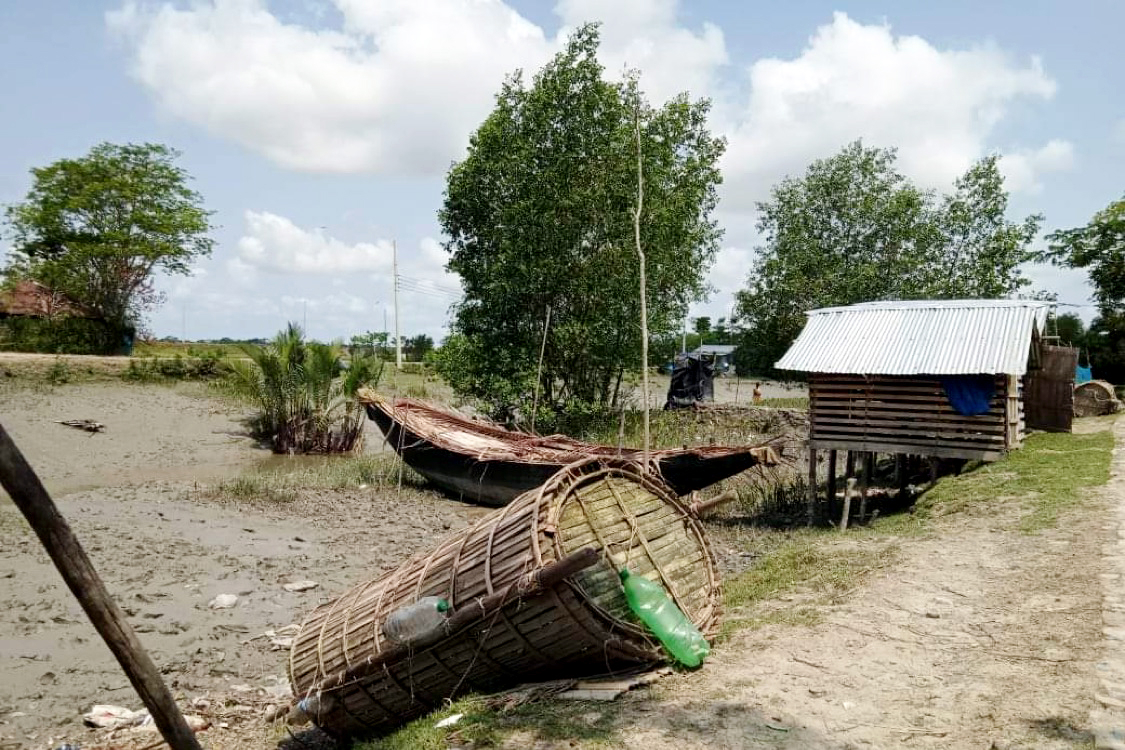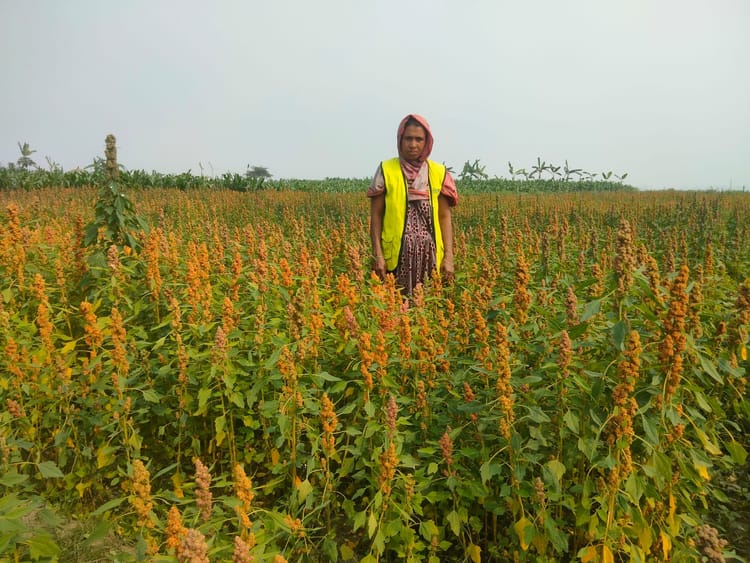Livelihood of coastal area people

The southern coast of Bangladesh is surrounded by the Bay of Bengal. Shahanaj Akter Poly lives on the southwestern edge of this coast, in the Mongla municipality of the Bagerhat district. Here, she sees people facing the impacts of the climate crisis with thousands of people leaving their homes.
The recent Yash cyclone demonstrated the devastation natural disasters can cause. The people here were identified as a vulnerable community to climate change due to the increased rainfall, more frequent and extensive flooding, extreme temperatures, rising sea levels, and droughts.
Approximately 70-80% people here depend directly or indirectly on agriculture, but as water levels decline, farmers cannot cultivate their land. As a result, farmers and their families struggle to get by. Most of their children dropout from the education sector because they are unable to afford tuition fees. The number of child laborers is increasing rapidly demonstrating how farmers' families and livelihoods are all affected by droughts.
In Mongla, water bodies are another key resource for peoples’ livelihoods. I remember seeing fishermen coming off the canals, ponds, and rivers with smiling faces and full boats of fish in previous decades. Now I hear that they are in an unbearable situation due to the drought.
Md. Zohor Ali worked as a fisherman. He used to catch fish from a canal beside his home. In recent years, the curse of drought has dried the canals and he can’t catch fish as he could in the past. As a result, he decided to change his profession and become a van puller.

Power plants
The Bangladeshi Government has decided to establish a 130MW coal-fired power plant at the mouth of the Sundarbans, beside the Poshur river under Rampal Upazila of Bagerhat district. I spoke with Md. Noor Alam Sheikh (President of the Climate Change Action group Mongla, POSHUR River Waterkeeper and an Environmental Activist) about how this would impact the river.
He explained to me how power plants are a large problem for the river's ecosystem. Within these plants, coal is burned to produce steam. At tremendous pressure, this steam flows into a turbine which spins a generator to produce electricity. Having cycled through the coal fired power plant, the hot water is released back into the lakes, rivers, or oceans with chlorine or other toxic chemicals. Thermal pollution can decrease fertility and increase the metabolism of fish. On top of this, burning coal is a leading cause of smog, and acid rain.

The Sundarbans
The Sundarbans will be affected by the new coal-fired power plant as they are situated only 9km downstream. This tidal forest is rich with natural resources, especially floral and faunal diversity including 66 species of plants, more than 200 species of fish, 42 mammals, 234 birds, 51 reptiles , 8 amphibians, and a lot of invertebrates.
More than 500,000 people are directly and indirectly depending on the Sundarbans for their livelihood as well as sociocultural purposes. People go to the Sundarbans regularly to collect resources for their livelihoods, some collect the resources seasonally and others process or sell the collected resources.






Member discussion